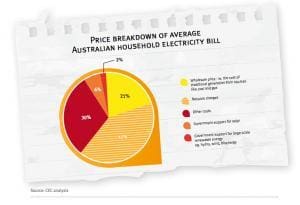The Queensland Solar Bonus Feed-in Tariff scheme rate has dropped from 44c per kilowatt-hour (kWh) to 8c/kWh as of 12:00am 10 July 2012. In order to receive the 44c/kWh rate, customers would have had to lodge completed applications by this time.
The Solar Choice team fielded over 400 enquiries on the day of the deadline, when thousands of people flooded onto the website looking for an installer who could process their application at the last minute (despite the 2 weeks advance notice given by the Queensland government). The only truly comparable situation in the history of Australia’s solar industry was when the NSW Solar Bonus Feed-in Tariff scheme was reduced from 60c/kWh gross to 20c/kWh net–except that in the case of NSW, the government left only 12 hours between announcement and deadline.
Why did Queensland introduce the Solar Bonus Scheme in the first place?
The 44c/kWh Queensland Solar Bonus Feed-in Tariff was the most generous left in Australia. The Solar Bonus Scheme was introduced under the previous Queensland government to both grow the solar PV installation industry in the state, as well as to encourage the proliferation of distributed, low-CO2 emissions solar PV generation systems. ‘Distributed generation’–small-scale power generation units dispersed throughout the electrical grid such as solar PV systems–provides the dual benefit of cutting carbon emissions by both generating CO2-free power as well as by mitigating the need for further centralised power generation plants–usually coal or gas–to be built (the “merit order effect“) to meet peak demand.
The misconception that Solar Feed-in Tariffs are the main cause of rising electricity rates
All 3 of these goals have been achieved in Queensland to varying degrees, and at little cost to Queensland electricity customers; in contrast to the hype in the media and the certain government voices, electricity rate hikes are due mainly to grid infrastructure (“poles and wires”) maintenance and upgrades. Domestic solar power support programs such as Queensland’s Solar Bonus Scheme account for only 6% of the electricity price rises that have been plaguing the country in the past years.
Although it is true that each individual is acting in their own self-interest in going solar (in order to save money on their electricity bills), the benefits will eventually be reaped by everyone who is connected to the grid–whether they have a solar PV system or not. In short, the proliferation of small-scale solar PV systems will result in future prices that are lower than what they would have been in the absence of distributed generation. This is a model for power generation that few beyond Germany have envisioned and subsequently made into a reality, and it is hard for Australia’s vested power interests to endorse for a number of reasons.

Affordable solar power is here to stay
It is certainly not the case that the phasing out of Solar Feed-in Tariffs across the country is an indication of their failure–conversely, they have been tremendously successful in making solar technology more affordable to the common person. The price of solar power has fallen drastically over the last several years, and this trend is projected to continue into the future, potentially countering the upwards trend of electricity prices.
On top of this, thanks to the lower price of solar power and the solar industry ‘infrastructure’ that is now in place, a new financing model that has been extremely successful in the US and the UK–solar leasing–has finally been introduced into Australia. This is an exciting option where no up-front capital is required, and instead households/businesses pay for solar power from the system that they have had installed for free on their roof at a rate that is less than what they pay for electricity from the grid. This model has potential to revolutionise the solar industry in a post-feed-in tariff Australia by eliminating the need to actually purchase the system.
Read more: The economics of solar power in Queensland after the Solar Bonus Feed-in Tariff rate reduction.
© 2012 Solar Choice Pty Ltd
- Solar Power Wagga Wagga, NSW – Compare outputs, returns and installers - 13 March, 2025
- Monocrystalline vs Polycrystalline Solar Panels: Busting Myths - 11 November, 2024
- Solar Hot Water System: Everything You Need to Know - 27 February, 2024